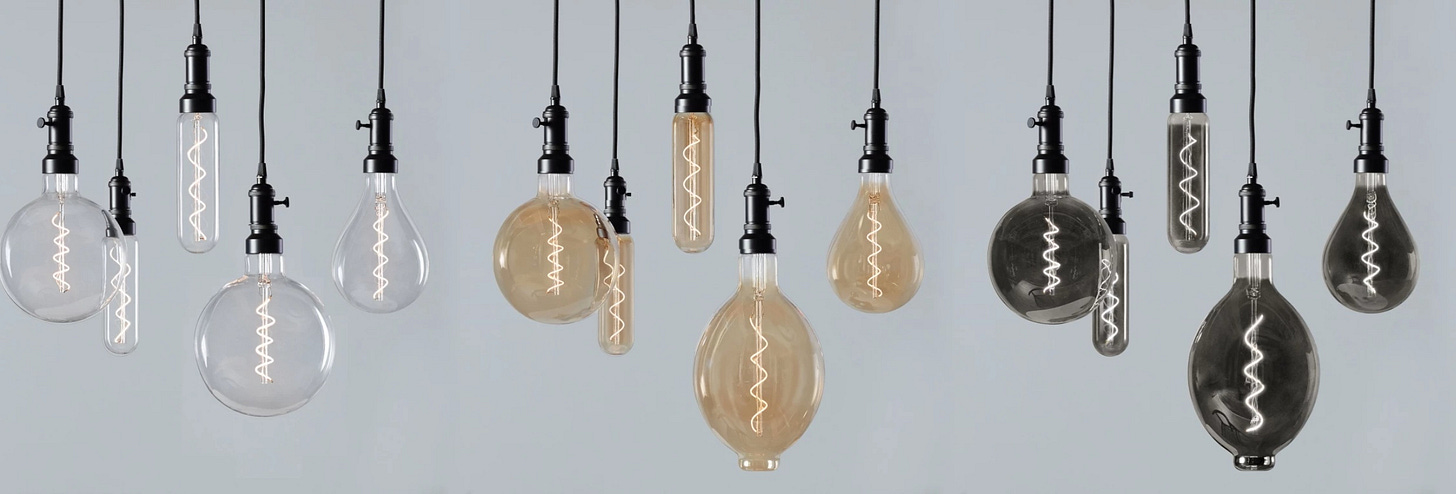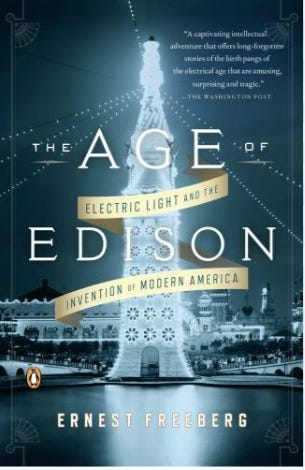$31 Bucks for a Light Bulb?
That's how much a new Edison bulb in 1881 would cost in today's dollars
My husband and I recently visited Fort Myers Beach, Florida, where we visited the side-by-side summer estates of two Industrial-era American broligarchs: Thomas Edison and Henry Ford.
The museum details each titan’s contributions to modern society, but I was particularly interested in the development of Edison’s light bulb because I sold roughly a gazillion light bulbs (give or take) at my parents’ two hardware stores.
Thomas Edison didn’t invent the incandescent bulb, but his 1879 patent is best known for improvements to the filament that made the bulb last longer. Wow, this is great, right? People were so lucky, right? They no longer had to rely on gas lamps or whale oil or pesky candles anymore, right?
In truth, getting Americans to switch to light bulbs was an long, arduous task.
In his 2013 book, “The Age of Edison: Electric Light and the Invention of Modern America” (Penguin Press), historian Ernest Freeman detailed some of the challenges. In 1881, a light bulb cost a dollar — about $31 in today’s money. For some workers, that amounted to an entire day’s wages. Electricity also caused fires, and newly formed electric companies strung ugly wires willy-nilly from structure to structure. Linemen were occasionally electrocuted, prompting fire insurers and trade associations to set standards that varied from place to place.
On the other hand, even though gaslight was cheaper than electricity, it was dim. It also was hot and filthy, with a sulfurous stink. Lamps had to be cleaned, and they occasionally caused fires.
Slowly, people came around. Over time, though, it became clear that incandescent bulbs use energy inefficiently, converting only 5% to 10% of power into light. As a result, the federal government banned the sale of most incandescent light bulbs nationwide. Today, fluorescent and compact-fluorescent bulbs, halogen and LED bulbs have replaced incandescent bulbs as the primary sources of lighting in most homes.
One popular look through homes and in high-end magazines: energy-efficient Edison bulbs. They have the “olde thyme” look without the sky-high light bill.






